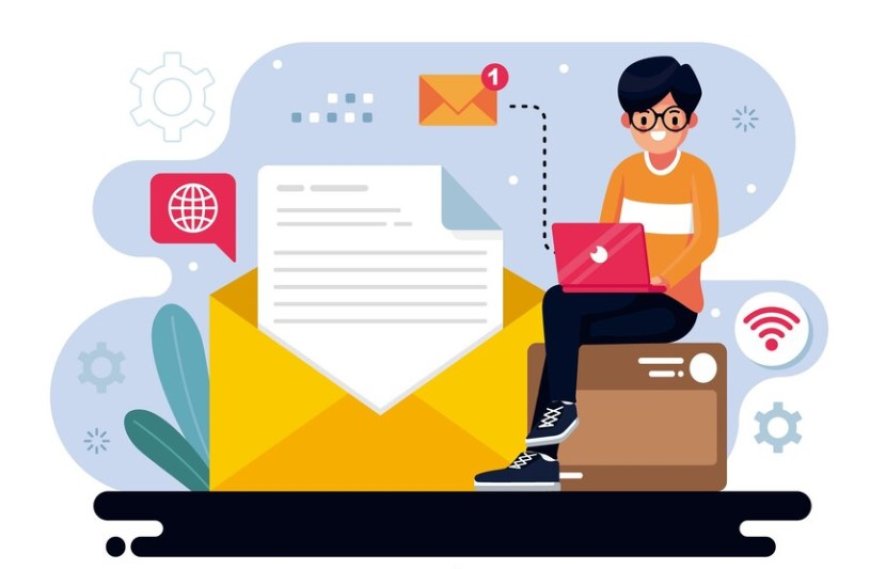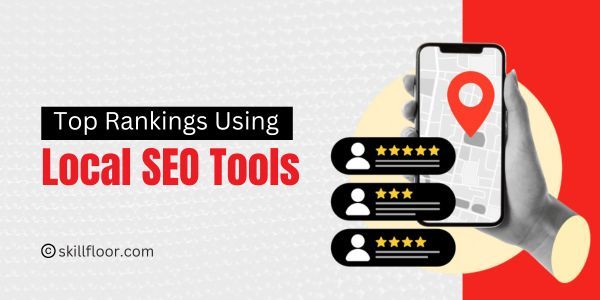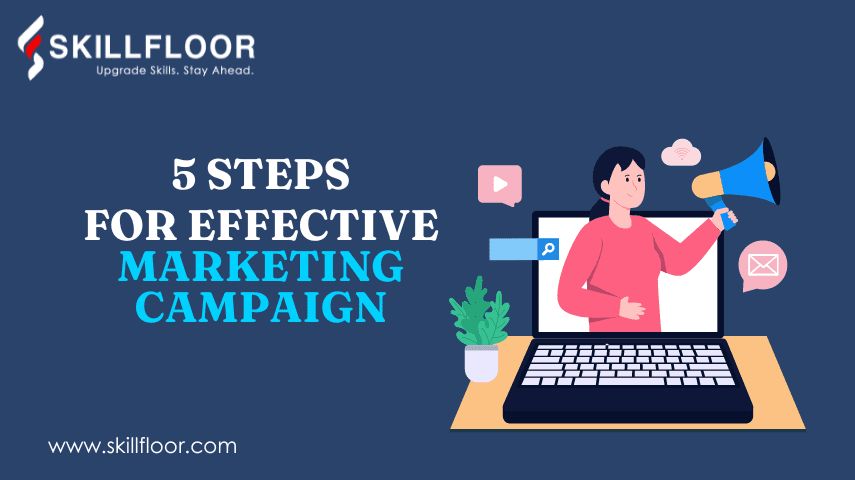Email Marketing Best Practices for Small Businesses
Discover effective email marketing best practices tailored for small businesses. Learn how to engage subscribers, boost conversions, and grow your business on a budget.

Email marketing is a crucial tool for small businesses. It helps them connect with customers in a direct and personal way. But, small businesses often face some tricky bits when it comes to email marketing. They might have limited resources and not a lot of time to figure out the best strategies. This is where using the right practices comes in handy.
Think of it like this: Imagine you have a little shop. You want to let your loyal customers know about a special sale. Sending them an email is a great way to do it. But, you need to make sure your email stands out and doesn't end up in their spam folder. That's where best practices in email marketing come in. They help you send emails that people actually want to open and read.
So, in this guide, we're going to walk through some simple and effective ways for small businesses to make the most out of their email marketing efforts. We'll talk about how to build your list of email subscribers, what to write in your emails, and how to measure if it's working. By following these steps, you can turn email marketing into a powerful tool for your small business, without needing a big budget or lots of fancy tech skills.
Identifying common mistakes and pitfalls small businesses often encounter in email marketing
Small businesses can sometimes run into some problems with email marketing. Let's break down these common issues in a simple way:
-
Limited Resources: One big issue is that small businesses might think they can't afford email marketing. They might not have a lot of money or time to spend on it. But, the truth is, you don't need a huge budget to start. There are affordable tools and strategies that can work for you.
-
Lack of Segmentation and Personalization: Another mistake is sending the same email to everyone. People like to get emails that feel like they're just for them. It's like when a friend remembers your birthday and sends a special message. Small businesses often miss out on personalizing emails, which can make them less effective.
-
Clean Subscriber List: Some small businesses forget to keep their email list updated. If you send emails to a lot of addresses that don't exist anymore, it can hurt your reputation. Plus, it's not good to keep emailing people who don't want your messages. So, maintaining a clean and engaged subscriber list is key.
-
Ineffective Design and Content: Your email needs to look good and say something interesting. If it's boring or hard to read, people will delete it fast. Small businesses sometimes struggle with creating attractive emails and writing compelling content.
-
Ignoring Analytics and Tracking: Lastly, many small businesses forget to see how well their emails are doing. They don't look at things like open rates or click-through rates. But, understanding these numbers can help you improve and send emails that work better.
These are the common complications small businesses face in email marketing. But, don't worry, in the next part, we'll talk about how to overcome these challenges with best practices to make your email marketing more successful and engaging for your customers.
What Are the Best Email Marketing Practices for Small Businesses?
Email marketing can be a powerful tool for small businesses to connect with customers and boost sales. However, it's easy to make mistakes. Here, we'll discuss some easy-to-follow best practices that can help small businesses overcome common challenges and get the most out of their email marketing efforts.
Build and Grow Your Email List
Your email list is the foundation of your email marketing strategy. Start by creating appealing signup forms on your website. Make it simple for visitors to subscribe, and consider offering incentives like discounts or free resources to encourage sign-ups. It's also a good idea to use a double opt-in process, where subscribers confirm their email address to ensure a clean list.
Create Engaging Content
Engaging content is key to keeping your subscribers interested. Write email subject lines that grab attention and email copy that's easy to read and relevant to your audience. Don't forget to make your emails mobile-friendly, so they look good on smartphones and tablets. You can also use visuals and videos to make your emails more attractive.
Personalize and Segment
Not all your subscribers are the same. Personalization and segmentation can help you send more targeted emails. Segment your email list based on factors like location, purchase history, or preferences. Send personalized content that matches each segment's interests. Personalizing subject lines and greetings can also make a big difference.
Use Automation
Automation can save you time and help you send the right message at the right time. Set up automated welcome emails when someone joins your list, and create drip campaigns to nurture leads and build relationships. You can also create re-engagement campaigns for subscribers who haven't interacted with your emails for a while.
Measure and Learn
To improve your email marketing, you need to know what's working and what's not. Keep an eye on important email metrics, like open rates, click-through rates, and conversion rates. Use A/B testing to try different subject lines, content, and calls-to-action to see what resonates with your audience. Analyze the data and use it to refine your future email campaigns.
Budget-Friendly Strategies
Small businesses often have tight budgets, but you can still make the most of email marketing without breaking the bank. Many email marketing platforms offer free or low-cost plans. Focus on high-impact, cost-effective strategies, and gradually scale your campaigns as your business grows.
Small businesses can enhance their email marketing by following these best practices. First, focus on growing your email list with user-friendly signup forms and incentives. Second, create engaging content with catchy subject lines and mobile-friendly design. Third, personalize and segment your emails to cater to different subscriber interests. Fourth, automate your emails for efficiency, and fifth, use data to measure and refine your campaigns. Finally, even with a limited budget, you can make email marketing work for your small business by using free or low-cost tools and smart strategies.
The Power of Email Marketing for Small Businesses
In the fast-paced digital world, email marketing remains a powerful tool for small businesses to connect with their audience, engage subscribers, and drive conversions. However, limited resources often make it challenging for small businesses to fully leverage email marketing. In this article, we'll explore how small businesses can make the most of their email marketing efforts without breaking the bank.
Email Marketing on a Budget
Small businesses may not have the financial muscle of larger corporations, but that doesn't mean they can't run effective email marketing campaigns. Here are some budget-friendly strategies to get started:
-
Choose the Right Email Marketing Platform: Many email marketing platforms offer free plans or low-cost options for small businesses. Look for platforms that provide essential features like list management, templates, and analytics without a hefty price tag.
-
Segment Your Audience: Personalization is key to engagement. By segmenting your email list into groups with similar interests or characteristics, you can send more relevant content, which leads to higher open and click-through rates. Most email marketing platforms offer this feature for free.
-
Content Creation: You don't need a big budget for content creation. Write compelling email copy in-house, using your expertise to connect with your audience. Invest in free or low-cost design tools to create visually appealing emails.
-
Automation: Automated email campaigns can save time and boost engagement. Welcome emails, follow-ups, and re-engagement emails can be set up in advance, ensuring a consistent flow of communication with subscribers.
-
Social Media Integration: Use your social media channels to promote your email list. Share teasers of what subscribers can expect and encourage your followers to sign up. This doesn't cost a dime but can expand your reach.
-
Email Signature Promotion: Utilize your email signature by adding a link to your email signup form. Every email you send becomes an opportunity to grow your list.
Strategies to Engage Subscribers and Boost Conversions
Now that you've started email marketing on a budget, let's delve into strategies that will help engage subscribers and increase conversion rates:
-
Personalization: Small businesses have a unique advantage in building personal connections with customers. Use the subscriber's name in emails and tailor content to their preferences whenever possible. This personal touch makes subscribers feel valued.
-
Compelling Subject Lines: Your email subject lines should grab attention. Craft them to pique curiosity or offer a benefit. A well-written subject line can significantly impact open rates.
-
Quality Over Quantity: Focus on sending quality emails, not overwhelming your subscribers with too many messages. A well-timed, relevant email is more likely to be opened and acted upon.
-
Clear Call to Action (CTA): Every email should have a clear and concise call to action. Whether it's making a purchase, signing up for an event, or downloading a resource, your CTA should stand out and be easy to follow.
-
Responsive Design: With a significant portion of email opens happening on mobile devices, ensure your emails are mobile-friendly. Responsive design adapts to different screen sizes, providing a seamless experience for all subscribers.
-
Storytelling: Share your brand's story in your emails. People connect with stories, and it helps create an emotional bond with your audience. Whether it's the journey of your business or the story behind a product, storytelling can be a powerful engagement tool.
-
Surveys and Feedback: Show your subscribers that you value their opinion. Send out surveys or feedback forms to gather insights. This not only engages them but also helps you improve your products or services.
-
Exclusive Offers: Offer exclusive discounts or promotions to your email subscribers. This incentivizes them to stay subscribed and engage with your emails. Limited-time offers can create a sense of urgency.
-
Segmentation for Targeted Campaigns: Use the segmentation feature to send specific content to different groups within your email list. For example, you can send promotions to new subscribers and educational content to long-term customers.
-
A/B Testing: Experiment with different elements in your emails, such as subject lines, images, and CTA buttons. A/B testing helps you identify what works best for your audience and improves future campaigns.
-
Re-engagement Campaigns: If you have subscribers who haven't engaged with your emails in a while, don't give up on them. Send re-engagement campaigns to bring them back into the fold. It's often more cost-effective to re-engage existing subscribers than to acquire new ones.
-
Analytics and Continuous Improvement: Regularly review your email analytics to understand what's working and what's not. Track open rates, click-through rates, and conversion rates. Use this data to refine your email marketing strategy over time.
Email marketing can be a game-changer for small businesses, even with limited budgets. By implementing these budget-friendly strategies and focusing on subscriber engagement and conversions, you can maximize the impact of your email marketing campaigns. Remember, building and nurturing relationships with your subscribers is the key to long-term success in email marketing.
Small businesses can benefit greatly from email marketing. To make the most of it, remember these key takeaways: build and maintain a clean email list, create engaging and mobile-friendly content, use personalization and segmentation, and track your results. Email marketing doesn't have to be expensive; you can start with budget-friendly tools and scale as you grow. It's an essential tool for staying connected with your customers and growing your business. So, whether you're just starting out or looking to improve, applying these best practices will help boost your email marketing efforts and drive better results.




























































